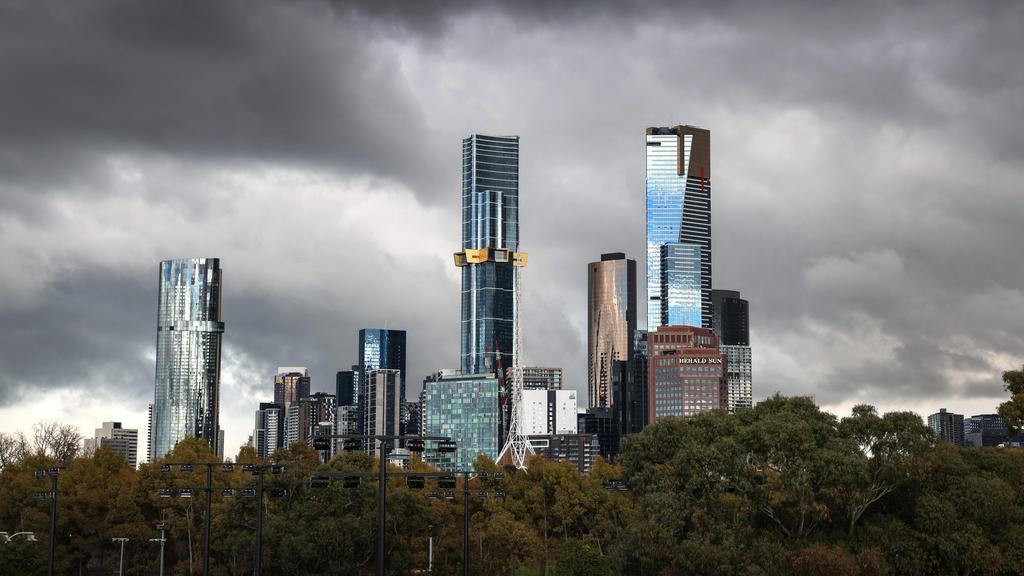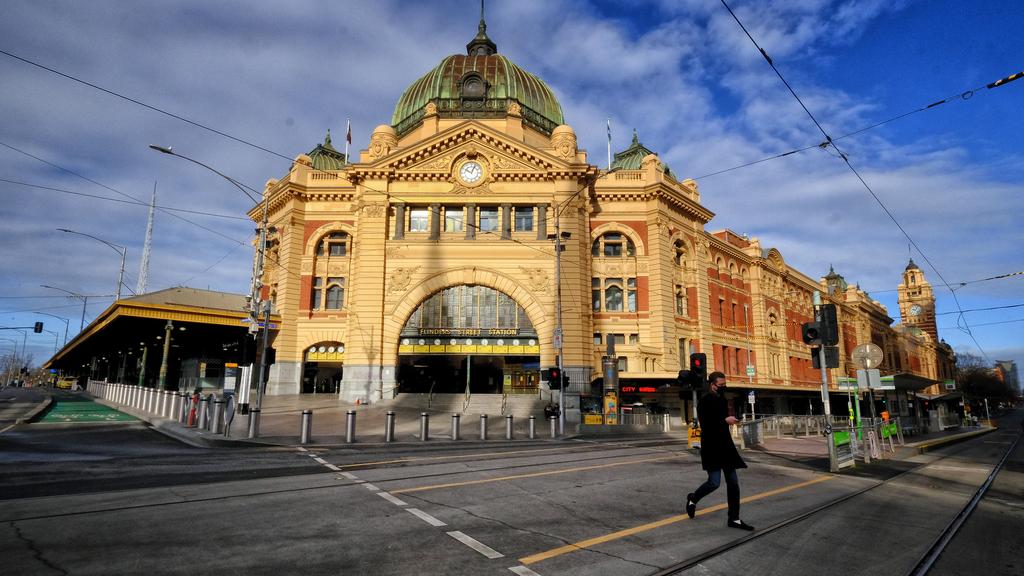Melbourne still lags behind other cities as lockdowns hit office occupancy

Melbourne is lagging behind other cities in getting tenants back into offices. Picture: David Caird
Landlords in locked-down central business districts face a tough period getting tenants back into their buildings after another plunge in the proportion of staff working in offices.
While big owners are confident there will be a bounce as workers return to their desks later this year, concerns remain about the slow recovery of Melbourne.
The latest Property Council survey of office occupancy shows that Melbourne was running at just 12 per cent of workers in offices in July, down from 26 per cent in June.
While this reflected the impact of the Andrews government’s lockdown, it reinforced a pattern that has seen the city deserted as it has rolled in and out of six shutdowns.
The Victorian capital is lagging behind other cities, even Sydney, which had recovered to consistent rates approaching 70 per cent occupancy before plunging to just 7 per cent in July. The city’s current Covid-19 outbreak could suppress occupancy in coming months.
Other cities largely unaffected by the pandemic have had relatively healthy levels of occupancy. Adelaide was running at 80 per cent in June before falling to 15 per cent in July when a lockdown was briefly imposed.
Brisbane, which was also affected by lockdowns, was running at about 70 per cent and slipped back to 67 per cent in July. Canberra was also running at above 70 per cent throughout the year and at about 73 per cent in July.
Perth was the least affected city, with occupancy at 78 per cent in July.
Smaller capitals like Darwin and Hobart were running at 89 per cent and 95 per cent last month, respectively.

Landlords in locked-down CBDs face a tough period getting tenants back into offices. Picture: NCA NewsWire / Luis Ascui
Melbourne’s office occupancy was at its lowest level since the end of last year’s 112-day lockdown, as the CBD continues to languish.
The Property Council said this was bad news for retail, hospitality, and other businesses reliant on the presence of office workers. Melbourne’s occupancy levels have remained behind the rest of Australia’s capital cities since Covid started.
PCA Victorian executive director Danni Hunter said after climbing back to 45 per cent of pre-Covid levels in April this year, office occupancy in Melbourne CBD went backwards as Victoria endured repeated lockdowns.
“All of the gains of earlier this year have now been lost as workers have again deserted the CBD with no sign of a bounce back as we endure our third lockdown in as many months,” Ms Hunter said.
Office vacancy rates reflecting the leasing market are now at a 20-year high in Melbourne’s CBD and demand is at the lowest since the recession of the 1990s.
Savills national head, office leasing, Graham Postma, said that all markets faced challenges around Covid-19, lockdowns, and flexible working arrangements.
“This said, as these events become ‘the new normal’ the negative effects are decreasing. Occupiers are moving towards making strategic longer-term decisions, which will continue to see ‘the office’ as the dominant and critical workplace,” he said.
“We anticipate post lockdowns business sentiment will continue to improve and many employees suffering from “WFH fatigue” will actively look and embrace the opportunity to return to the CBDs around the country,” he said.
Knight Frank national head of leasing, Australia, Andrea Roberts, said the first half of 2021 had seen a robust performance from Australia’s office leasing markets, with demand recovering in line with improved business sentiment and preparedness to invest.
She said sentiment was quite different from the lockdown experience last year. “We have more certainty around what coming back to the CBDs will look like post lockdowns and there are clear signs that underlying demand remains solid across all size ranges, which will result in a sharp rebound when restrictions lift,” she said.
“Inquiry levels in the first half of 2021 exceeded pre-pandemic levels reflecting the desire of occupiers to address the changing needs of the workplace post the pandemic disruption and move up the office quality scale,” Ms Roberts.
“We have not seen come to fruition evidence of widespread downsizing of office requirements across the board, or the emergence hub and spoke models dispersing workplaces, which was all the talk in the first lockdown of 2020.
“Newly-reinstated lockdowns will inevitably result in slowing in activity in the near term, due to the physical restraints on inspections. However, we see this as a pause or delay and organisations are looking through this short-term lockdown disruption and continue to focus on how to grow their business as we continue to re-emerge from the pandemic,” Ms Roberts said.







